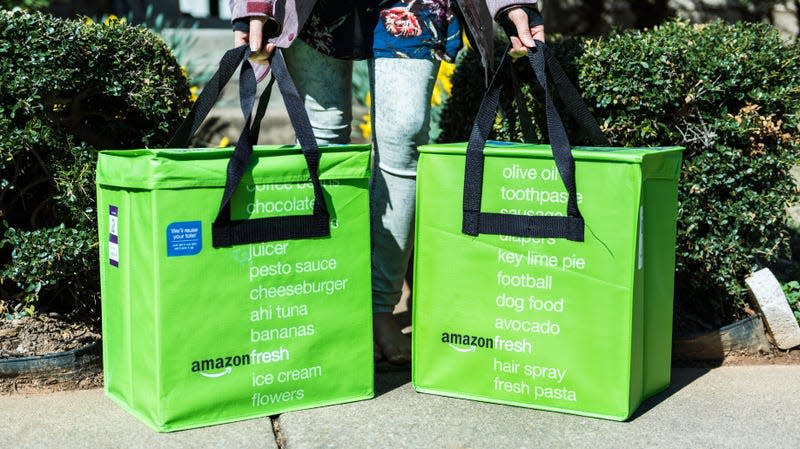Amazon Fresh to Start Charging Delivery Fees on Grocery Orders Under $150

Amazon Fresh offers grocery convenience, now with more fees.
Amazon Prime members who use Amazon Fresh, the company’s grocery delivery service, will soon be shelling out more for their standard shipments. The company is set to start charging delivery fees on all grocery orders under $150 on February 28, 2023, according to an email sent to Amazon Prime members and seen by Gizmodo.
The forthcoming tiered fee schedule will charge $9.95 for two-hour delivery of orders less than $50, $6.95 for orders between $50 and $100, and $3.95 for orders from $100 to $150. After $150, delivery will remain free. Customers in some areas will be able to get a discount on the delivery charge by opting for a longer, six-hour delivery window instead of the standard two.
Read more
These Winning Close-Up Photos Show Life That's Often Overlooked
Remembering Enterprise: The Test Shuttle That Never Flew to Space
“This service fee will help keep prices low in our online and physical grocery stores as we better cover grocery delivery costs and continue to enable offering a consistent, fast, and high-quality delivery experience,” the company wrote in its email to customers, and an Amazon spokesperson reiterated in a statement emailed to Gizmodo.
Previously, Amazon charged $14.99/month, on top of of the monthly or annual cost of Prime membership, for its grocery service. But in 2019, the company scrapped that additional membership cost, making the service free to all Prime members—with the small caveat of an order minimum ($35 in most of the U.S., $50 in New York City).
Evidently though, the move to slash customer costs wasn’t set to last. Instead of re-instituting the blanket subscription fee, the company has moved towards charging for delivery instead—arguably in opposition to the core idea of Amazon Prime. Prime membership itself got a price increase last year, going from $119 to $139 annually. If customers of the mega e-tailer are routinely placing grocery orders of less than $150, Amazon Fresh will easily become more expensive than it was pre-2019.
Amazon first began selling groceries online in 2007. In the years since grocery delivery has become an increasingly crowded business landscape, full of start-ups and established tech companies pivoting into the game. One of Amazon Fresh’s biggest competitors, Instacart, boomed in popularity at the height of the covid pandemic. Yet in recent months, online grocery sales have been declining.
More from Gizmodo
Sign up for Gizmodo's Newsletter. For the latest news, Facebook, Twitter and Instagram.

